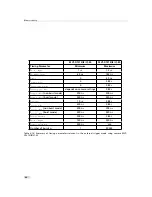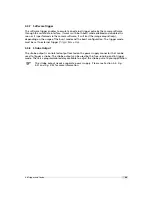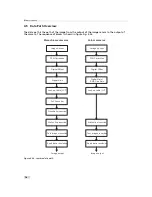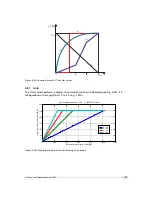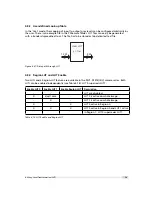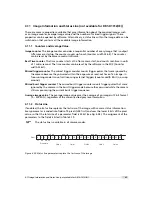
4 Functionality
4.7
Digital Gain and Offset
There are two different gain settings on the camera:
Gain (Digital Fine Gain)
Digital fine gain accepts fractional values from 0.01 up to 15.99. It is
implemented as a multiplication operation. Colour camera models only: There is
additionally a gain for every RGB colour channel. The RGB channel gain is used to
calibrate the white balance in an image, which has to be set according to the current
lighting condition.
Digital Gain
Digital Gain is a coarse gain with the settings x1, x2, x4 and x8. It is implemented
as a binary shift of the image data where ’0’ is shifted to the LSB’s of the gray values. E.g.
for gain x2, the output value is shifted by 1 and bit 0 is set to ’0’.
The resulting gain is the product of the two gain values, which means that the image data is
multiplied in the camera by this factor.
Digital Fine Gain and Digital Gain may result in missing codes in the output im-
age data.
A user-defined value can be subtracted from the gray value in the digital offset block. If digital
gain is applied and if the brightness of the image is too big then the interesting part of the
output image might be saturated. By subtracting an offset from the input of the gain block it
is possible to avoid the saturation.
4.8
Grey Level Transformation (LUT)
Grey level transformation is remapping of the grey level values of an input image to new
values. The look-up table (LUT) is used to convert the greyscale value of each pixel in an image
into another grey value. It is typically used to implement a transfer curve for contrast
expansion. The camera performs a 12-to-8-bit mapping, so that 4096 input grey levels can be
mapped to 256 output grey levels. The use of the three available modes is explained in the
next sections. Two LUT and a Region-LUT feature are available in the MV1-D1312 camera series
(see Section 4.8.4).
For the MV1-D1312-240-CL camera series, bits 0 & 1 of the LUT input are fixed to
0.
The output grey level resolution of the look-up table (independent of gain,
gamma or user-definded mode) is always 8 bit.
There are 2 predefined functions, which generate a look-up table and transfer it
to the camera. For other transfer functions the user can define his own LUT file.
Some commonly used transfer curves are shown in Fig. 4.43. Line a denotes a negative or
inverse transformation, line b enhances the image contrast between grey values x0 and x1.
Line c shows brightness thresholding and the result is an image with only black and white grey
levels. and line d applies a gamma correction (see also Section 4.8.2).
76
Summary of Contents for DR1-D1312(IE)-G2
Page 2: ......
Page 4: ...2...
Page 8: ...CONTENTS 6...
Page 14: ...2 How to get started GigE G2 Figure 2 3 PFInstaller components choice 12...
Page 96: ...4 Functionality 94...
Page 122: ...6 Software 120...
Page 128: ...8 Warranty 126...
Page 130: ...9 References 128...





